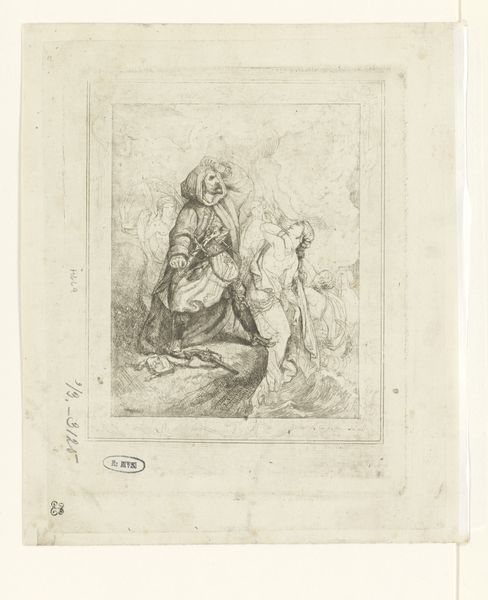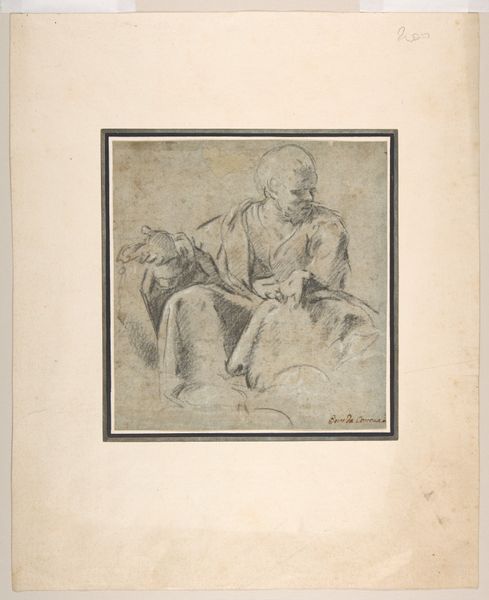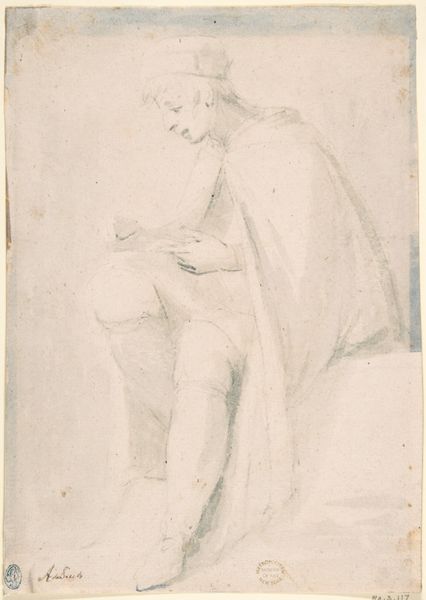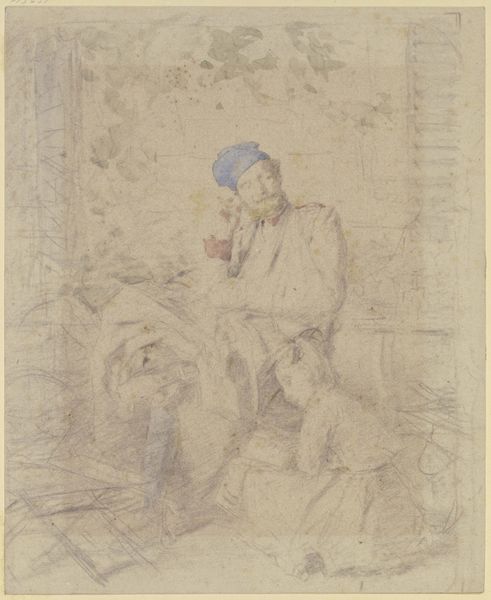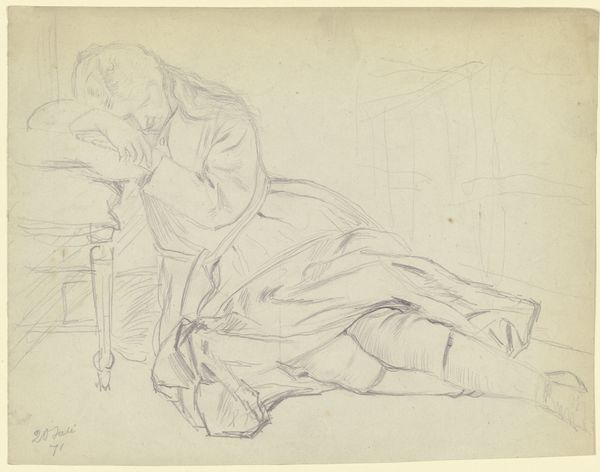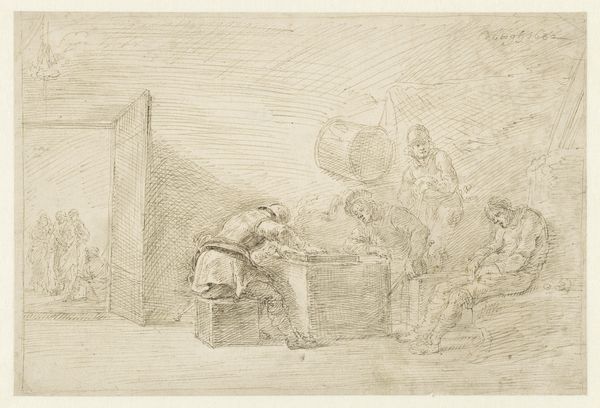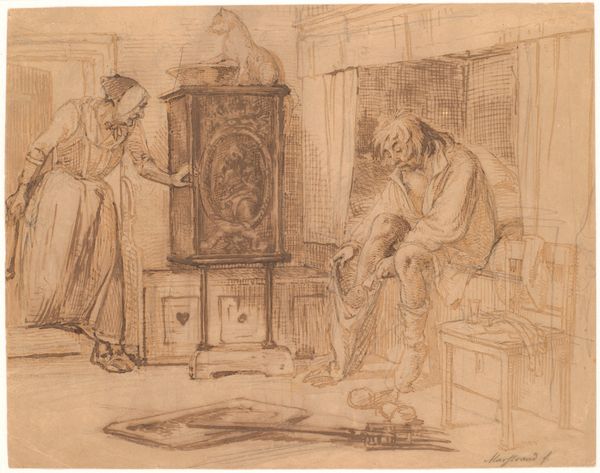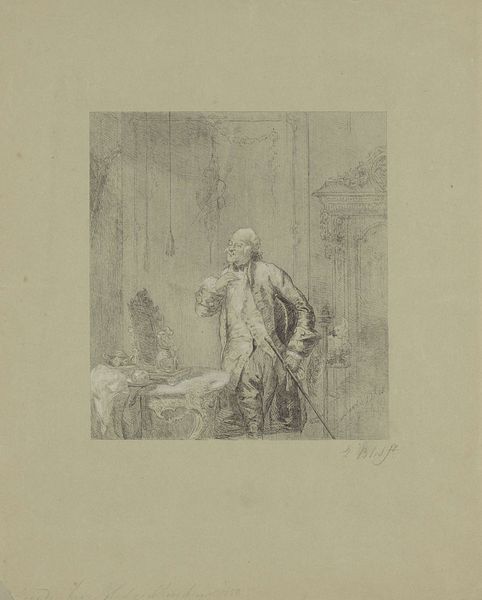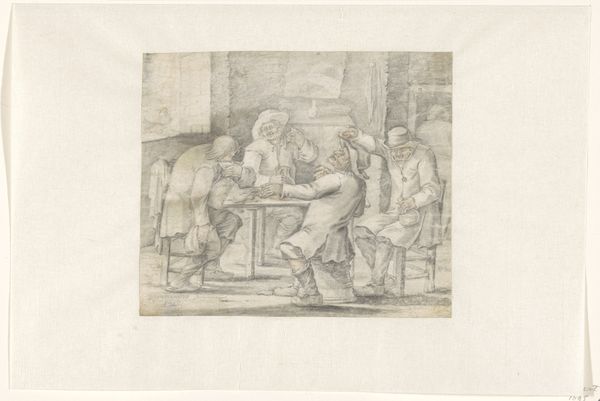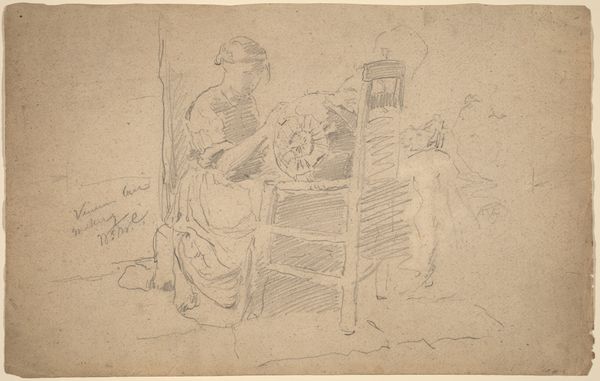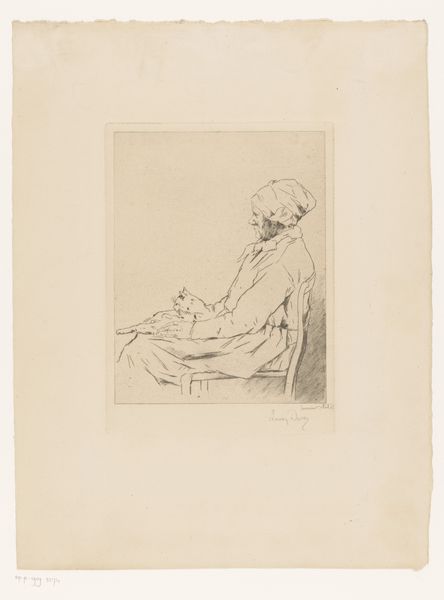
drawing, paper, ink
#
portrait
#
drawing
#
figuration
#
paper
#
11_renaissance
#
ink
#
line
#
genre-painting
#
history-painting
#
northern-renaissance
#
watercolor
Dimensions: height 299 mm, width 196 mm
Copyright: Rijks Museum: Open Domain
Editor: This drawing, "Saint Jerome in his Study," dates from 1560 to 1580 and is by an anonymous artist. It's done in ink on paper. The overwhelming sense for me is one of quiet contemplation, almost monastic. What do you see in this piece? Curator: The prevalence of Saint Jerome imagery during the Renaissance signals more than just religious devotion. Jerome, the scholar who translated the Bible into Latin, became a powerful symbol of humanist ideals: intellectual pursuit, the importance of original texts, and the reconciliation of classical learning with Christian faith. Editor: I see, so the setting contributes to his persona. Curator: Indeed. Look at the composition – the skull on his desk, the lion at his feet. What feelings or ideas do they evoke? Consider how they were understood in the Renaissance. Editor: The skull represents mortality, I suppose. The lion, I would assume, represents the story of him removing a thorn from its paw. The desk is adorned with what seems like an opened tome. Is he shown more as a scholar than a saint in this one? Curator: The placement of the lion at his feet could also speak to a triumph of intellect and faith over primal instinct. Ask yourself, is this drawing purely biographical, or is it using the figure of Jerome to communicate broader ideas about the value of knowledge, faith, and our place in the world? Editor: It’s fascinating how many layers of meaning are embedded in what appears to be a simple depiction. I'll never look at another Saint Jerome in the same way. Curator: Understanding these layers reveals how art functions as a storehouse of cultural memory, constantly reinterpreted through the lens of changing values and beliefs.
Comments
No comments
Be the first to comment and join the conversation on the ultimate creative platform.
